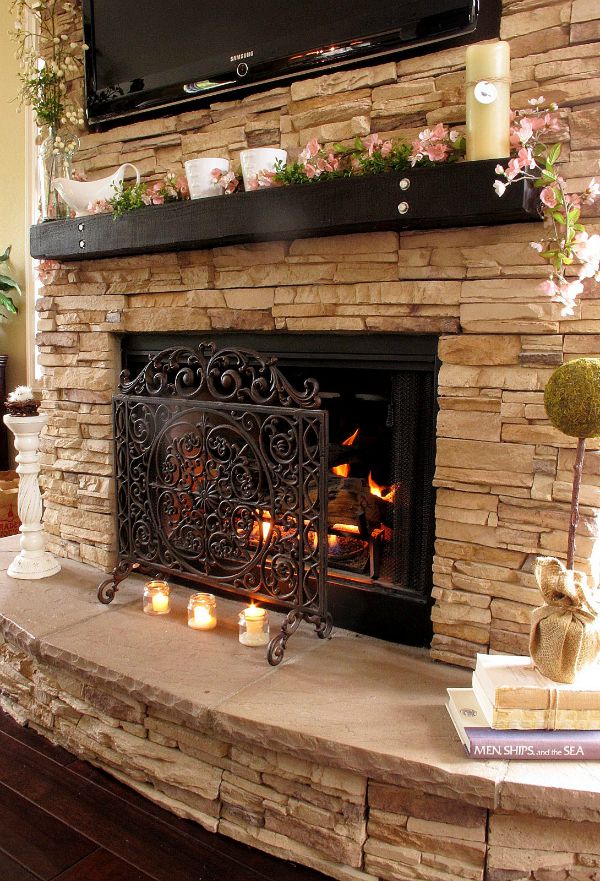Looking to design a stone fireplace? I’m sharing several stone fireplace ideas to consider!
A while back, I wrote about the transformation of our built in shelves next to our fireplace. We started off with a fireplace and bookcases that looked like this:
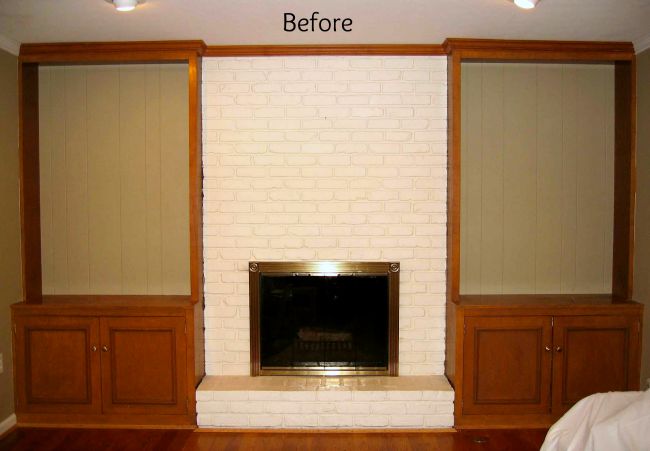
And after painting the bookcases and covering our once-brick fireplace with stone veneer, we transformed it into this stacked stone fireplace we love:
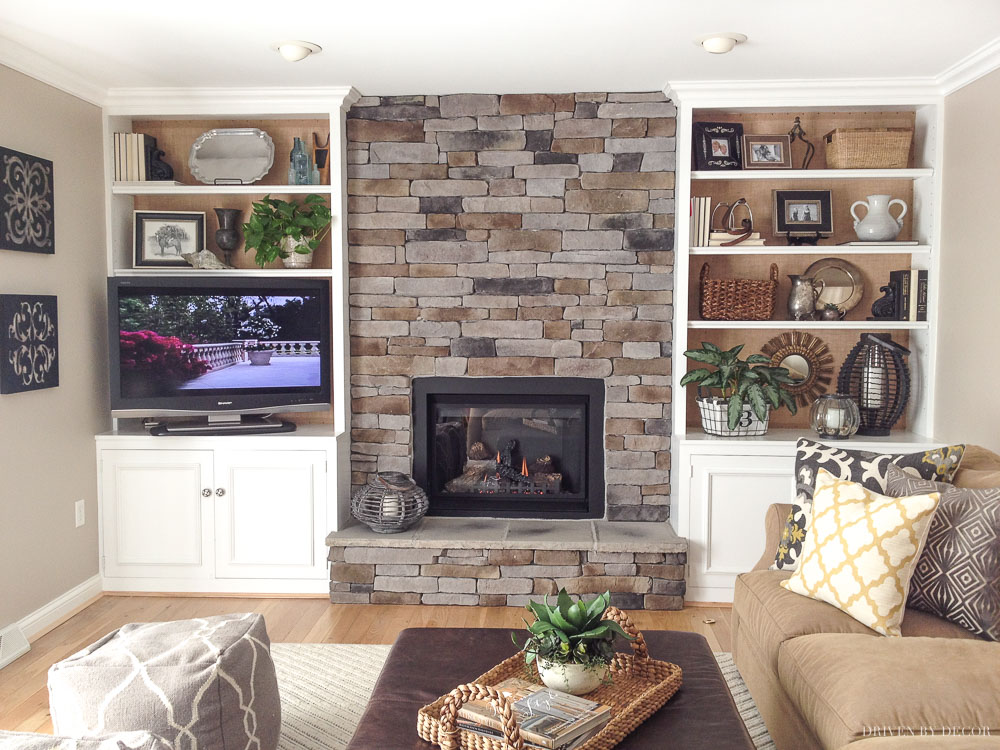
I thought that remodeling our fireplace would be as simple as walking into the showroom of the fireplace/stone veneer dealer, picking my stone, and scheduling the installation but this seemingly easy task quickly became pretty frustrating & time-consuming. It all could have been prevented if going into the project I had information about the choices I would need to make and a little guidance on how to make them.
My goal with this post is to make the process much easier for any of you jumping into a similar project. I’ve included five stone fireplace ideas to consider when designing a stone fireplace:
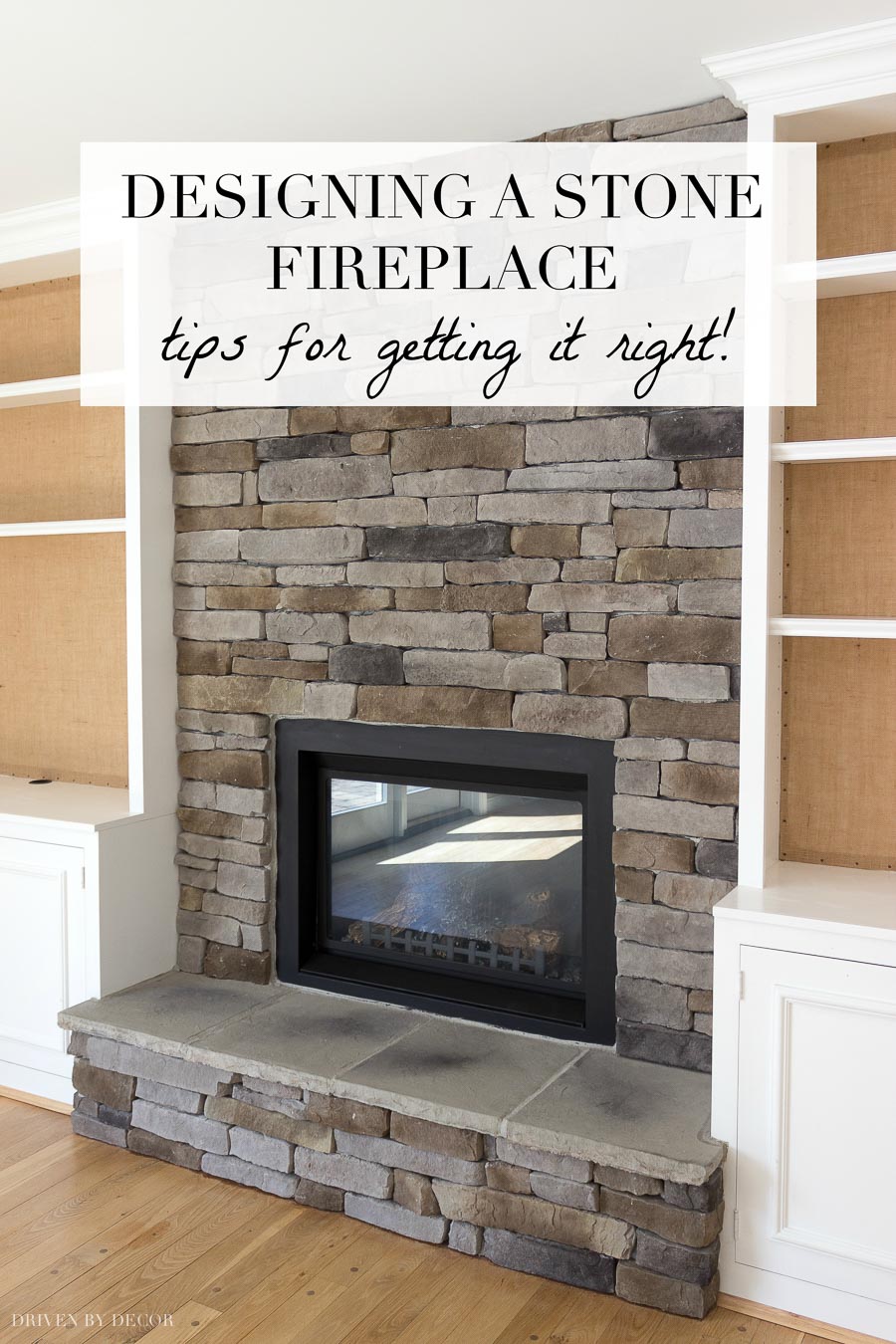
1. Manufactured vs. Natural Stone Veneer for Your Fireplace
One of the main decisions you’ll have to make is whether you want to use manufactured or natural stone. The pros of manufactured (also known as “cultured”) stone are that it is much less expensive than natural stone and because it’s lighter than natural stone, it’s also simpler and less expensive to install. The pro of natural stone is its beauty – there is variation in each and every stone and the end product is gorgeous.
If you have a large budget, natural stone is a great choice and may be the way for you to go but I chose manufactured stone veneer to stay within my budget. Considering the amount of money I saved and how close my manufactured stone veneer looks to the “real thing”, I’m very happy with my decision.
2. Choosing the Style and Color of Fireplace Stone
There are many different styles of stone to choose from including fieldstone, stacked stone like in this beautiful fireplace below that you can see more of {here}:
river rock, and many others. You can also use a combination of two different types of stone such as fieldstone and ledgestone. Each style of manufactured stone comes in several color options, making the range of choices mind-boggling. I ended up choosing a ledgestone (StoneCraft Industries’ Ledgestone) in warm shades of gray and tan (“Pennsylvania” color):
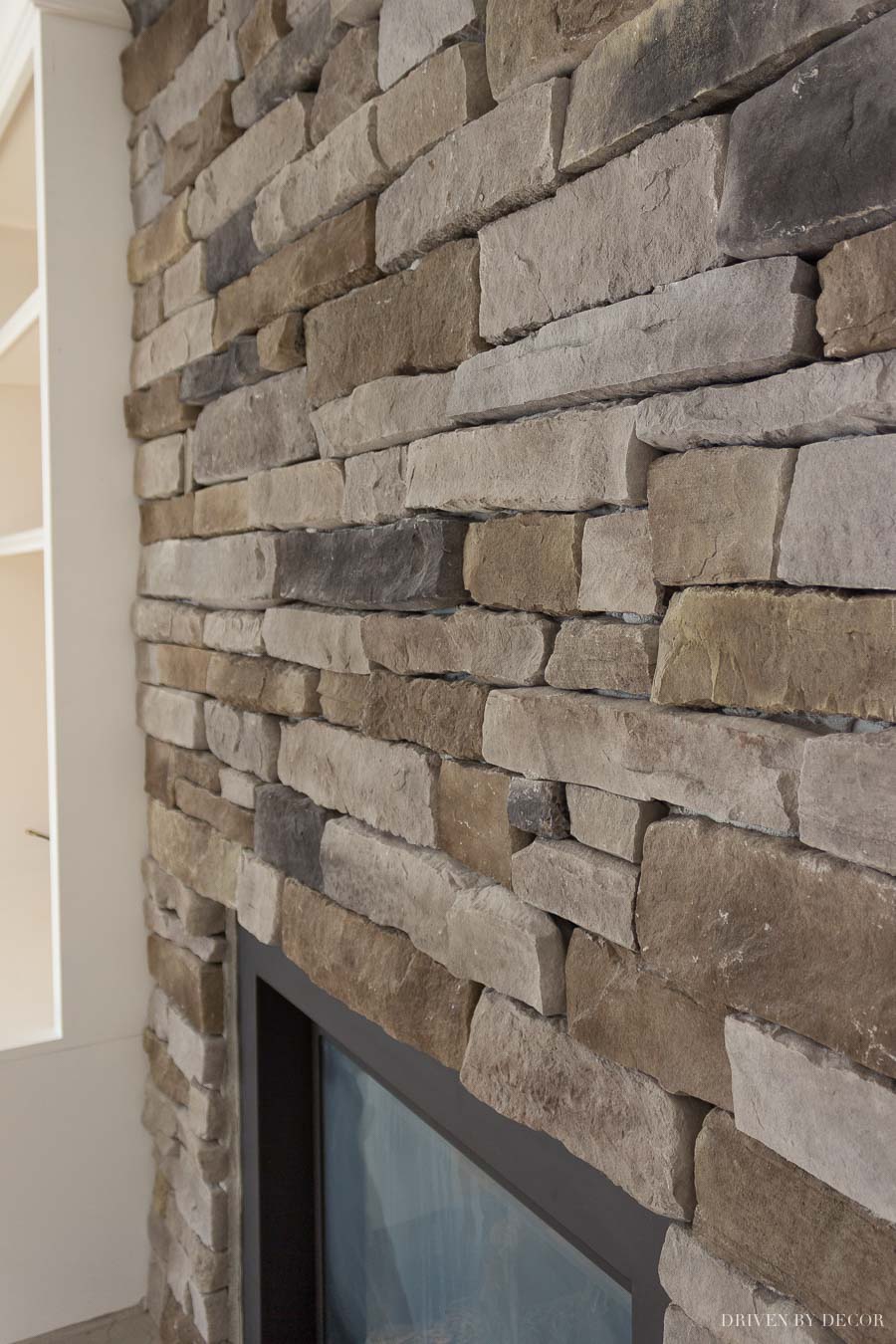
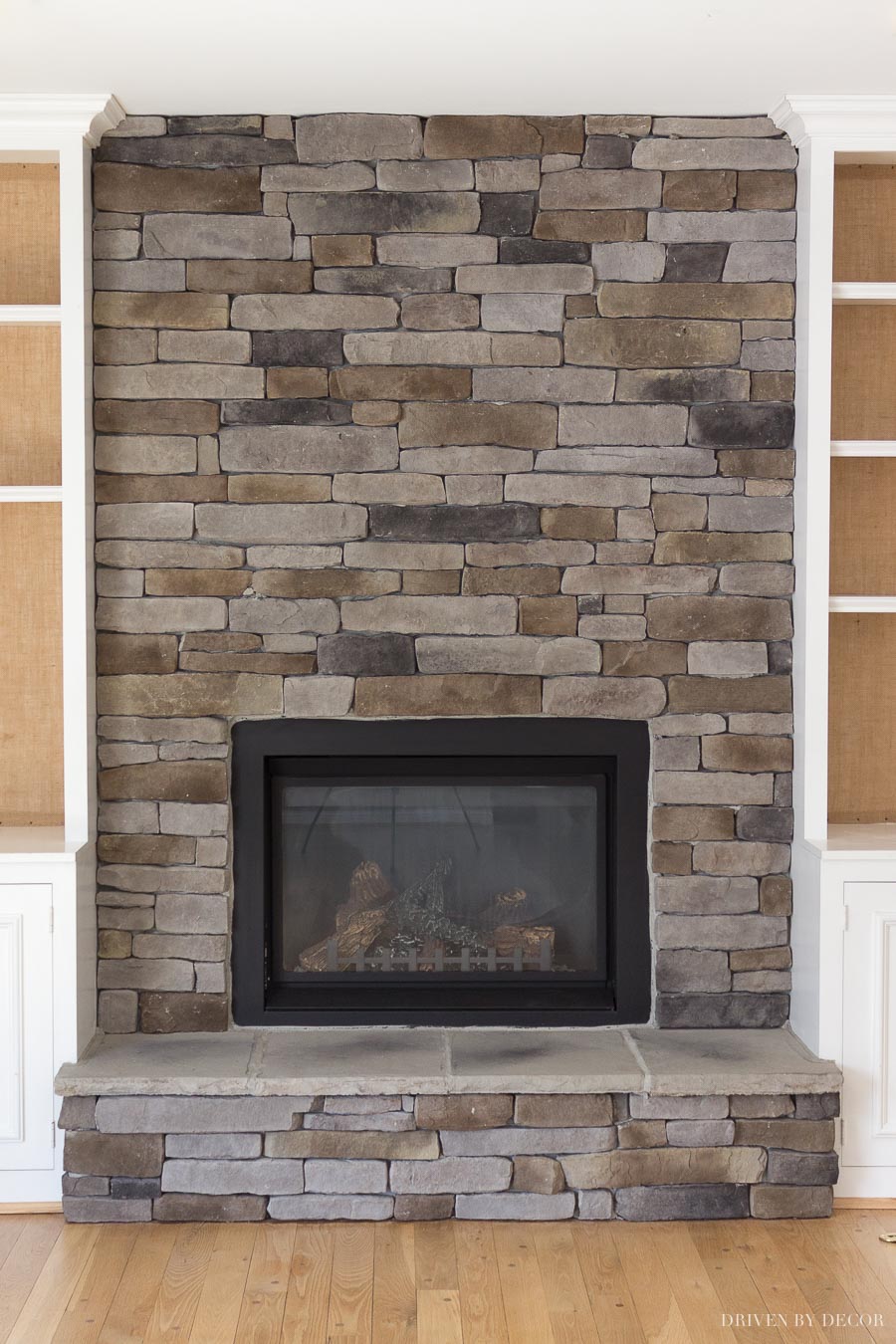
The best way to choose the style and color of stone is to visit a few showrooms that have fireplaces on display with various stone options. Once you’ve narrowed down your selections by taking into consideration the colors and style of your home, ask to borrow some sample boards so that you can see how the stone looks in your home. If the showroom doesn’t have sample boards that they loan out, ask if you can borrow several pieces of stone (get a good variety in size and color) for each of your possible options.
Also if you choose stacked stone, you need to decide whether you want “dry” stacked stone or stone with mortar showing between the stones. This pic shows both – stacked stone with mortar at the top and dry stacked stone at the bottom:
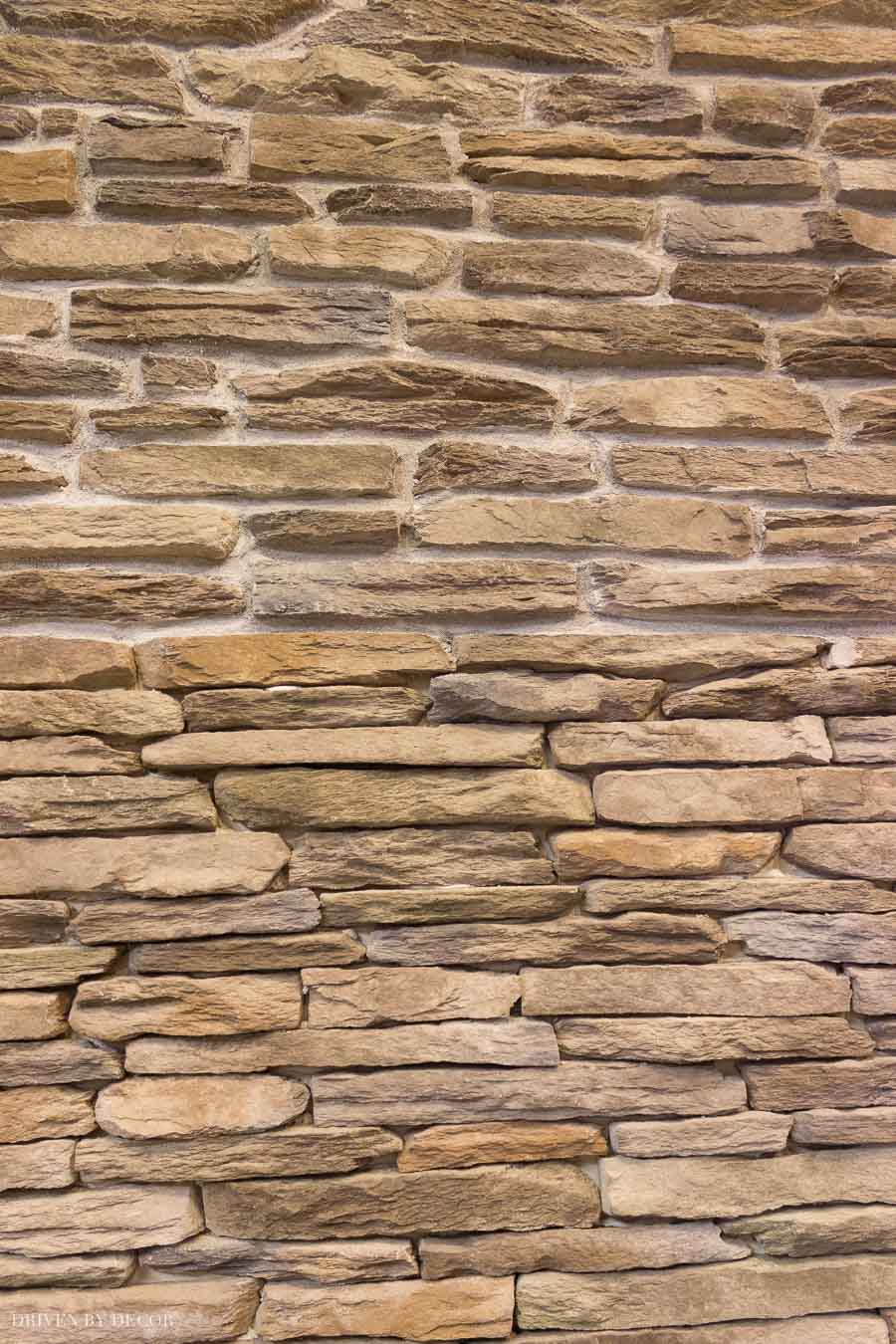
3. Consider Keystones or Other Stone Trim
The best way to decide whether to incorporate keystones or other stone trim into your fireplace design is to seek inspiration online and in fireplace showrooms. While I chose a basic layout without keystones or other stone trim, you could chose to do a keystone plus a row of accent stones above the fireplace opening,
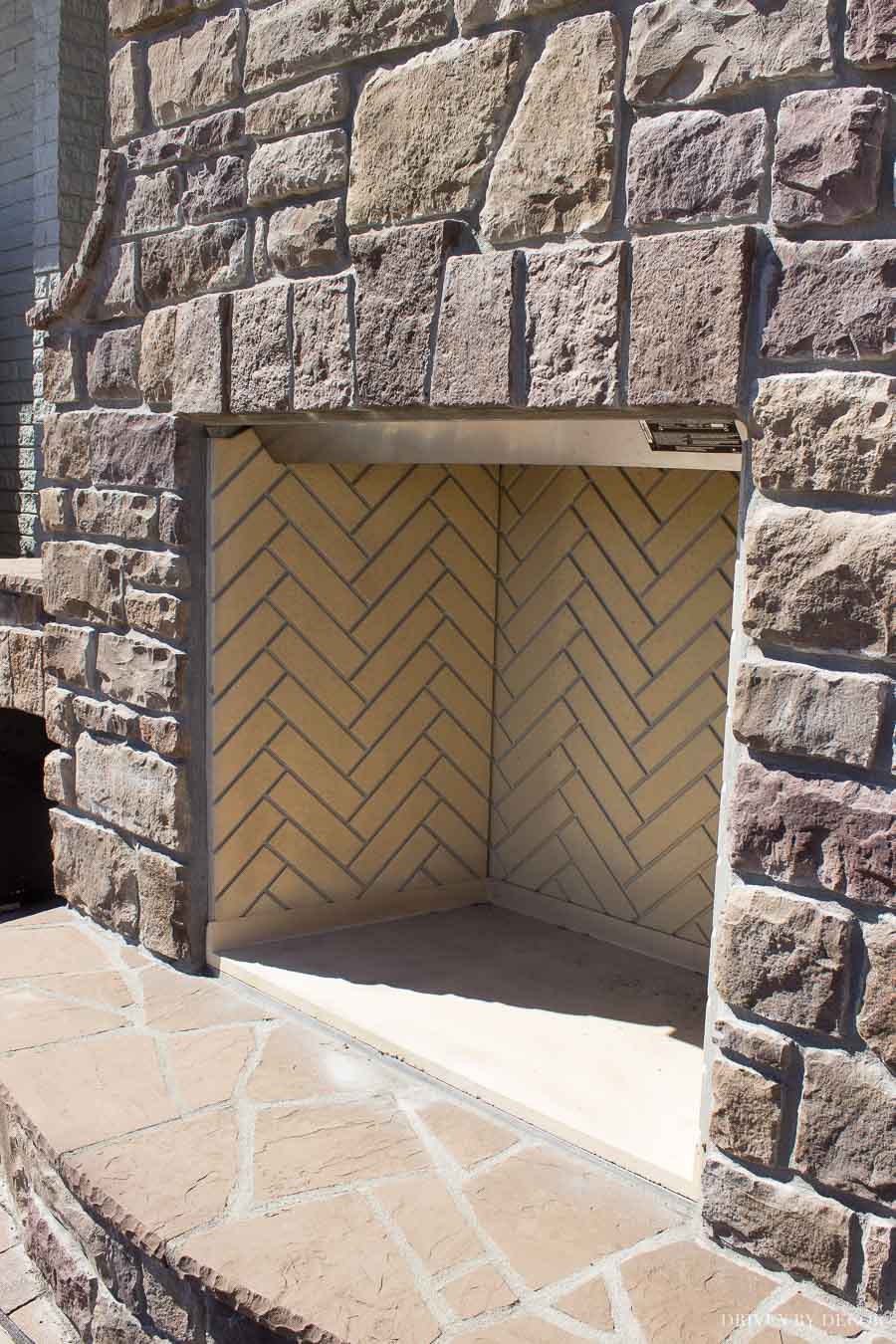
a simple arch design,
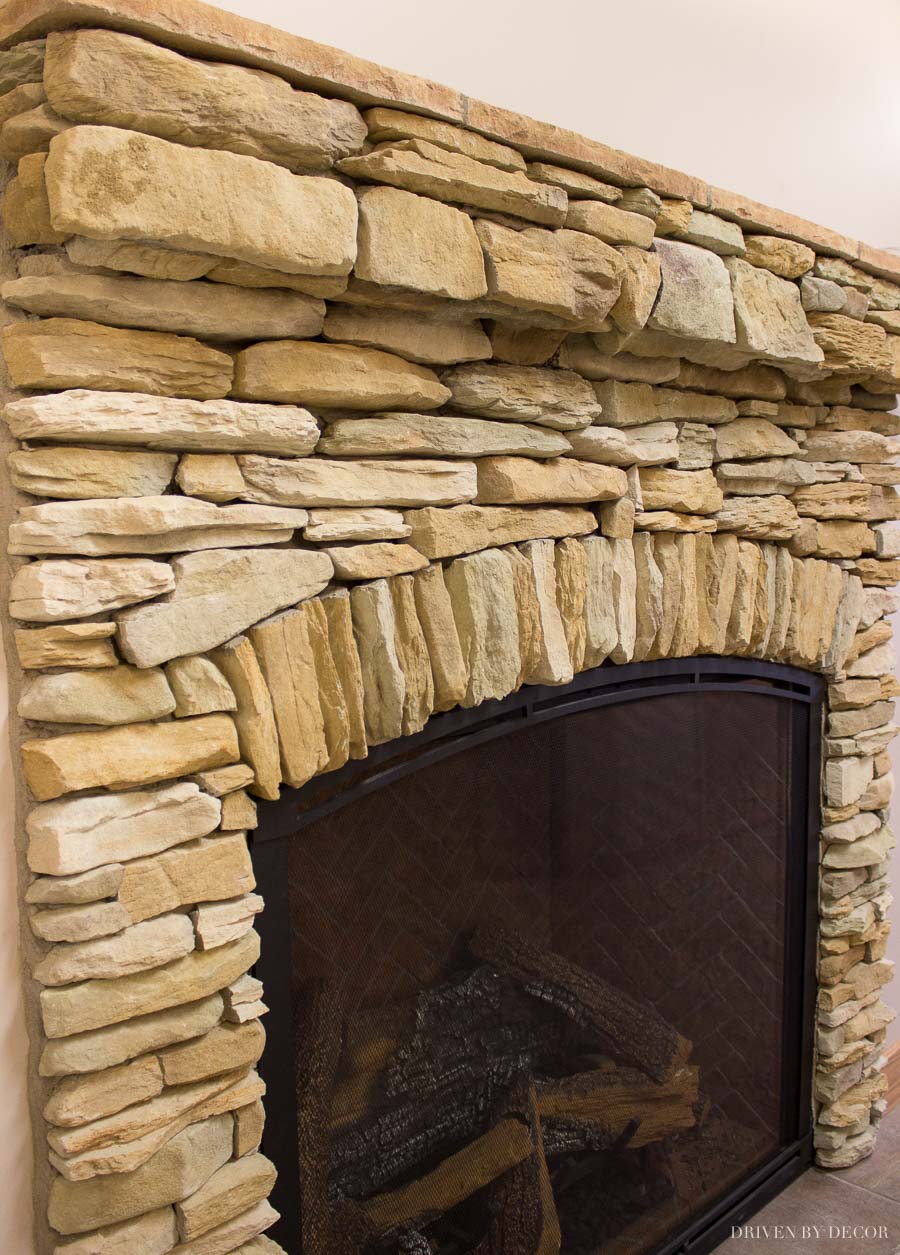
one long, single stone above the fireplace opening , or any other design/pattern of trim stone that you can dream up. My advice – keep it simple with either no keystones/trim or a simple design.
4. Mantel or No Mantel and, If So, What Type?
If you’d like to have a mantel, it is ideally installed in conjunction with the stone veneer so this decision should be made along with the selection of your stone. There are several different materials that can be used to create a mantel, such as stone, painted wood, or natural or stained wood. My fireplace obviously has no mantel and I go back and forth about whether that was the best decision or not. I already have so much shelving surrounding it that I didn’t need a mantel for displaying anything and I do like the more streamlined look but it definitely would be nice to have a mantel to decorate for the holidays!
5. Decide on the Design of Your Hearth
Most of the stone veneer manufacturers carry hearthstones designed to coordinate with your chosen stone veneer. However, beware – the hearthstones that were meant to go with the stone veneer that I chose were ugly and fake looking. The lesson here is to make sure you ask to see the coordinating hearthstones and not just assume that they will look just as good as the stone veneer you chose! If you don’t like what you see, shop around – I was able to find hearthstones that I liked from a different manufacturer:
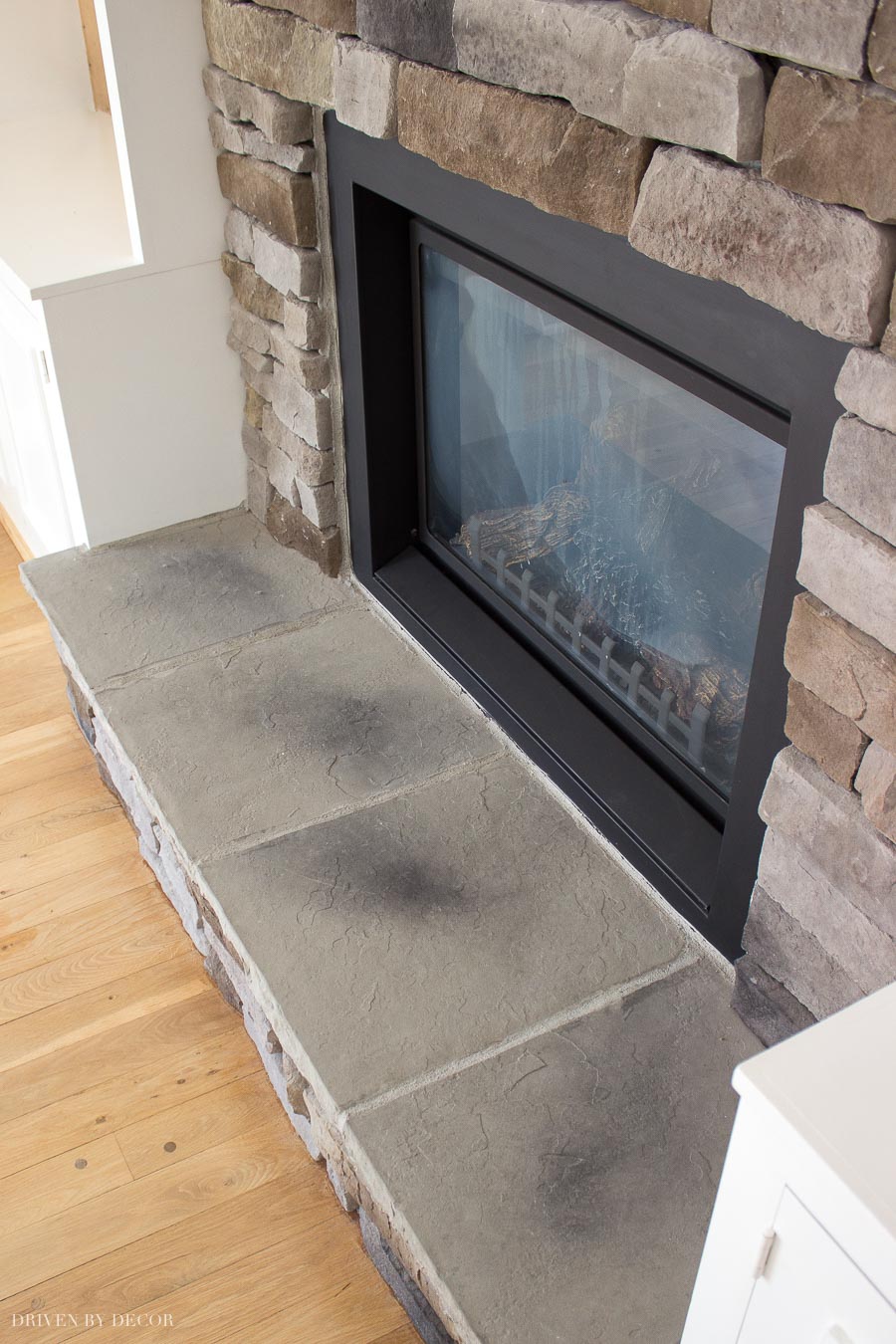
Also consider how you want your hearthstones laid – you can lay them the typical way like I did or choose to have them broken up with mortar in between the pieces:
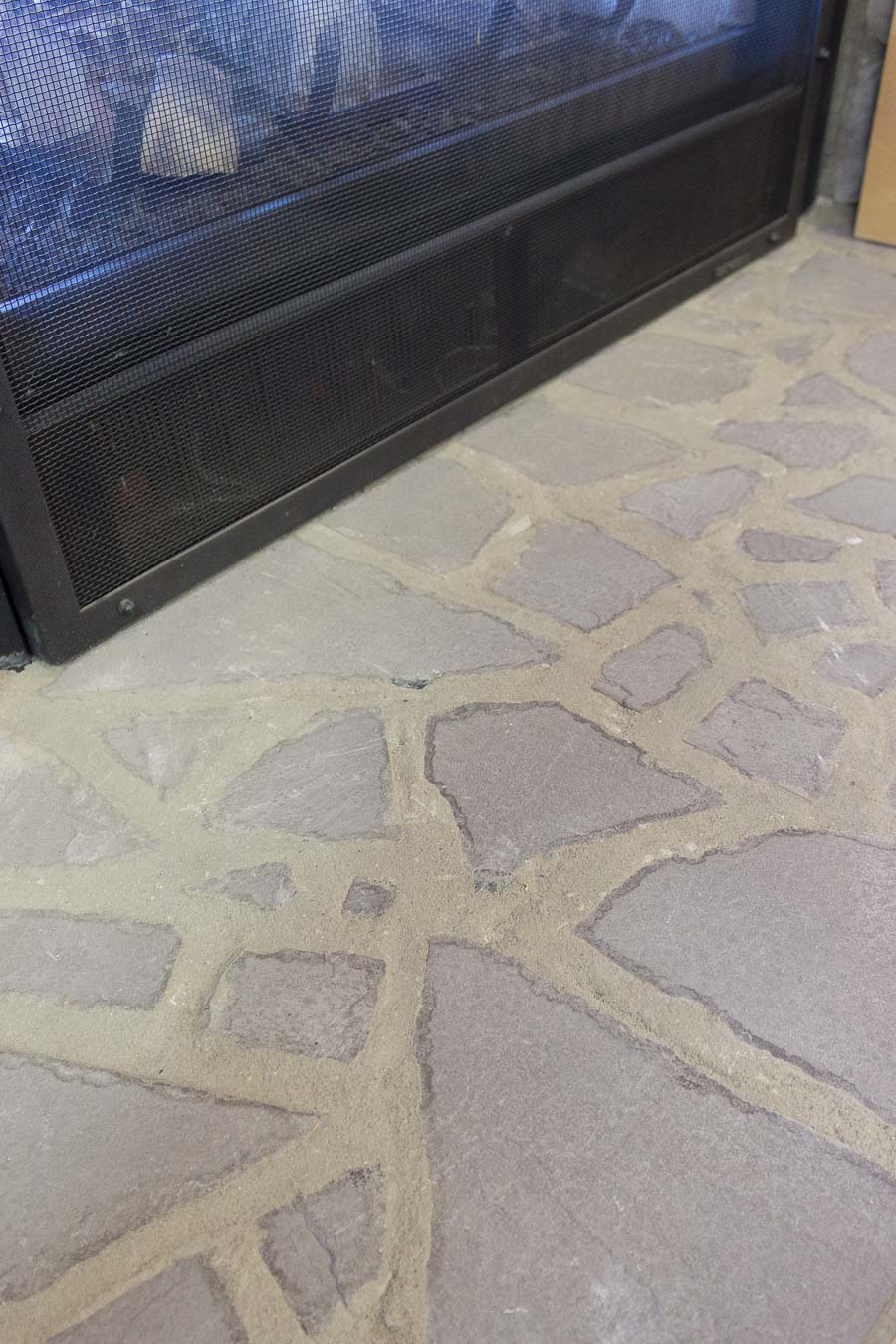
Another option to consider is using natural stone for the hearth even if you used manufactured stone veneer for the rest of the fireplace. When natural stone is used, it’s often in a large slab of a material such as bluestone. The natural stone costs more than manufactured hearthstones but for most fireplaces it’s not too large of an area so the difference in cost may be doable.
For those of you embarking on a stone fireplace remodel project, I hope you found this post to be helpful. If you have a fireplace with shelving on both sides of it like mine, another post you might find to be helpful is my post on how to decorate a bookshelf.



